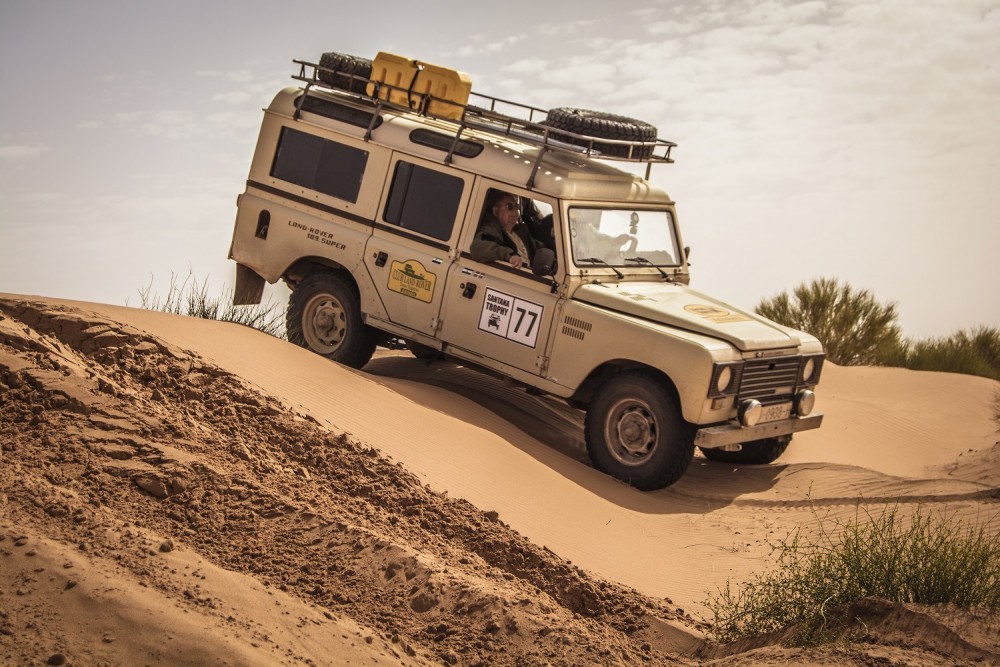
Tyre pressure for all-terrain off-road driving
What’s the right tyre pressure for driving an all-terrain vehicle off-road? The answer in this case is not as obvious as in the case of driving on normal roads – tyre pressure for normal driving should be that stated by the tyre manufacturer.
In this post we’re going to refer to suitable pressure or, put another way, the most effective for 4x4 driving off-road over different types of terrain.
In determining the most effective pressure, we’ll need to establish the type of terrain we’re going to drive on. In any event, anything we say about this is also conditioned by other factors such as the weight of our vehicle, the types of tyre we use and the type of rim.
Although there is almost unanimous consensus in the 4x4 off-road world in that tyre pressure needs to be lowered once off the asphalt, the matter is by no means settled as to what pressure is needed in each given case. Thus, depending on who we talk to or read, we’ll find there are diverse opinions on the subject.
Firstly, we should clarify the fact that the main goal is achieved by lowering tyre pressure – i.e. to increase the tyre’s contact surface with the ground, so as to ensure better traction on certain terrains. This, in my opinion, is the main purpose, which itself justifies lowering pressure.
We also in turn gain other advantages, even though these may be less important and don’t on their own necessarily justify taking this measure. These advantages – accessories, as we might call them – may range from obtaining greater tyre flexibility in order to improve their adaptability to the terrain, thus ensuring greater comfort for passengers and loads, or alleviating the work done by the car’s different mechanical components, suspension and differentials, etc. They may even help us to be more environmentally-friendly, reducing the impact of damage to tracks by increasing traction.
As we said, the main reason for lowering tyre pressure is to obtain a greater rubbing surface on the terrain, especially on soft terrain such as mud, sand, gravel or even snow. As a greater rubbing surface is achieved on this type of terrain, the surface of the tyre in contact with the ground is in turn greater, ensuring better traction. A tyre with lower pressure expands its tread in such a way that it increases the contact surface with the terrain, thus improving traction.
In the case of relatively large, roundish rocks or stones, it’s also advisable to lower pressure – in such case, apart from a greater rubbing surface, better adaptability on the part of the tyre with the rock is obtained which means a better grip on the rock and consequently leads to better traction.
However, how much should pressure be lowered or what pressure is advisable for tyres depending on the terrain we will be dealing with?
One recommendation might be, for instance, as follows:
- Sand 0.8 bar / 12 PSI
- Mud or soft snow 1.2 bar / 18 PSI
- Gravel 1.5 bar / 22 PSI
- Large rocks 1 bar / 14 PSI
These pressures are quite well accepted, although they need to be, as we’ve already said, in relation to the size and weight of the vehicle we are driving and to the types of tyre and rim we are using. In my opinion, the recommended pressure for sand is too low – I don’t tend to lower it so much, I think lowering it to between one and 1.2 bar is sufficient.
However, when lowering the pressure, we manage to increase tyre friction with the terrain, and this conversely means that their flanks, their sides, suffer more wear and tear. That’s why on certain stony or mixed terrains where there may be sharp-edged stones, it is in my opinion advisable to use tyres at the pressure recommended by the manufacturer, or even a bit more.
Having said this, there are those who are against recommending low pressures even for terrain with sharp stones. They maintain that by providing the wheel with greater flexibility or adaptability to the terrain, the rubber adapts to it by grasping the stone, in such a way as to dig into it. I believe this opinion focuses more on the stones we step on – those that remain beneath the tread rather than those we leave on the side. In my view, based on my personal experience and basically from the times I’ve had a puncture, when we’re dealing with sharp-edged stones then a weak flank entails quite a lot more risk than the advantage provided by adaptability. In my case, the times I’ve had a puncture off-road have been owing to cuts on the sides, not to punctures on the rubbing surface. That’s why I still maintain that it’s better to keep to recommended tyre pressures for roads in the case of mixed terrain, where there is a risk of coming across sharp-edged stones.
Lastly, we should not forget that driving with low tyre pressure increases the risk of de-rimming, of the edges of the tyres becoming detached from the wheel cradle, from the "U" shape, with the ensuing problem. This means that, with low pressure, our driving will be gentler, less brusque, less aggressive, in trying not to push the wheels to the limit. This point is where both the type of tyre we fit and its features come into the equation, and also the type of rim we use – tyre pressure margin may vary from those mentioned above depending on the features of one or the other.